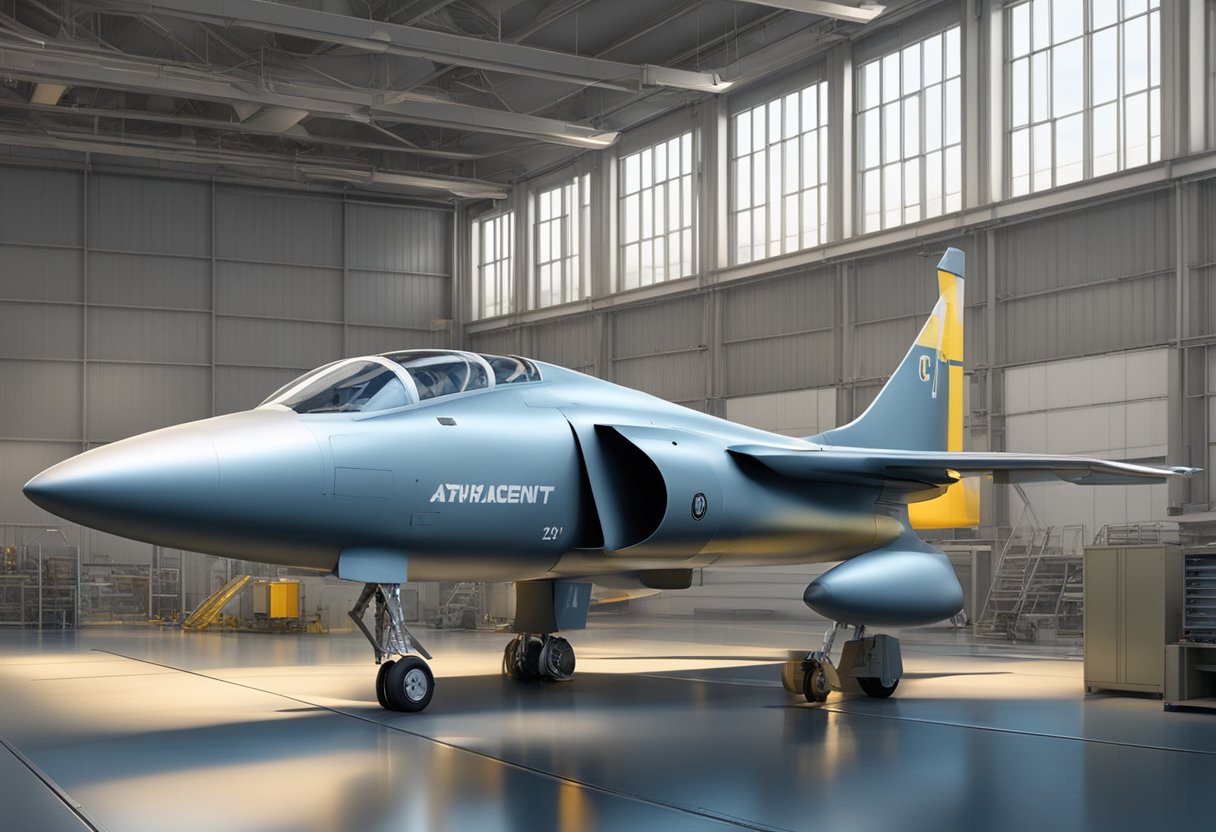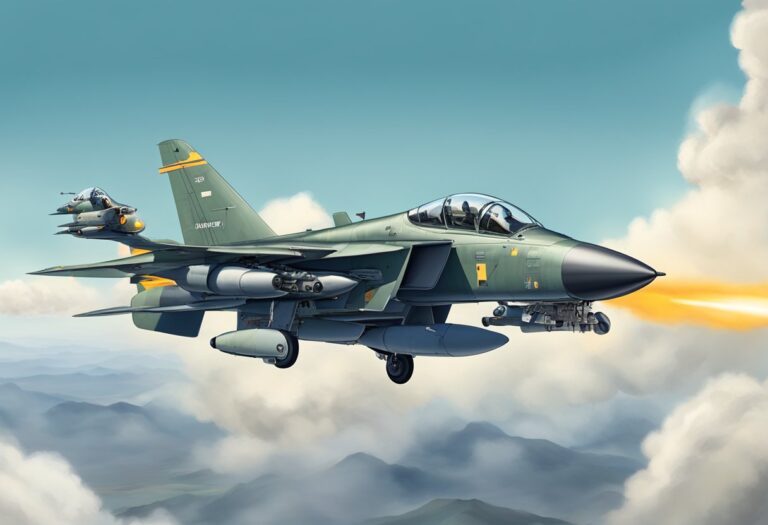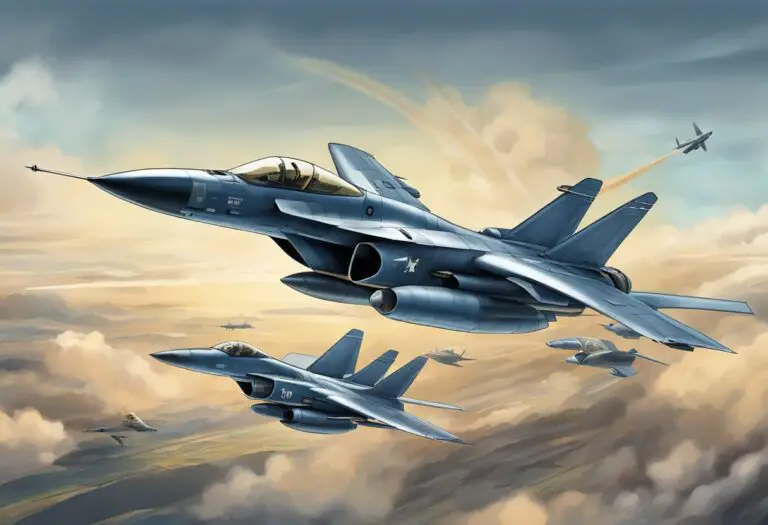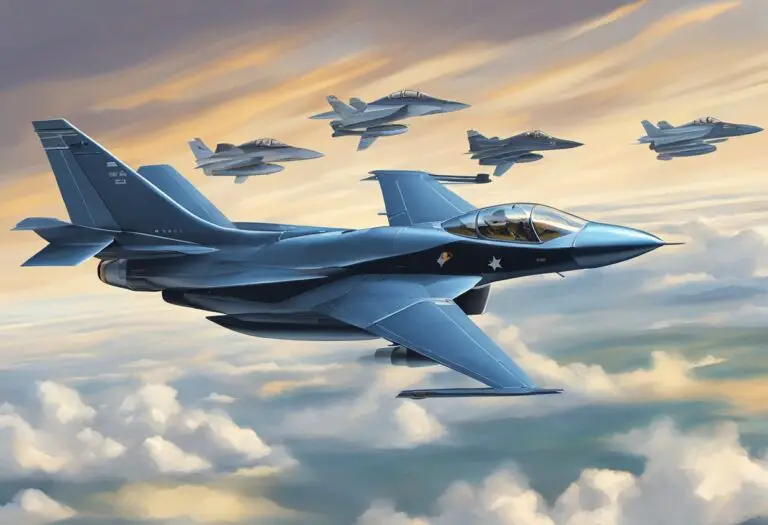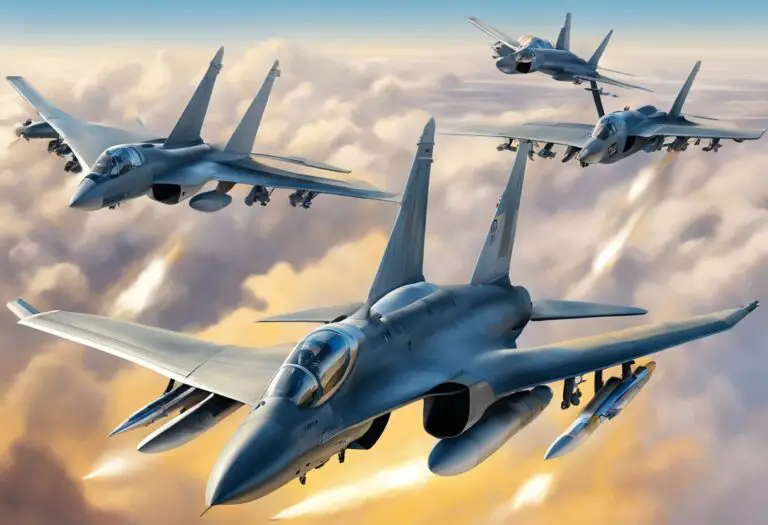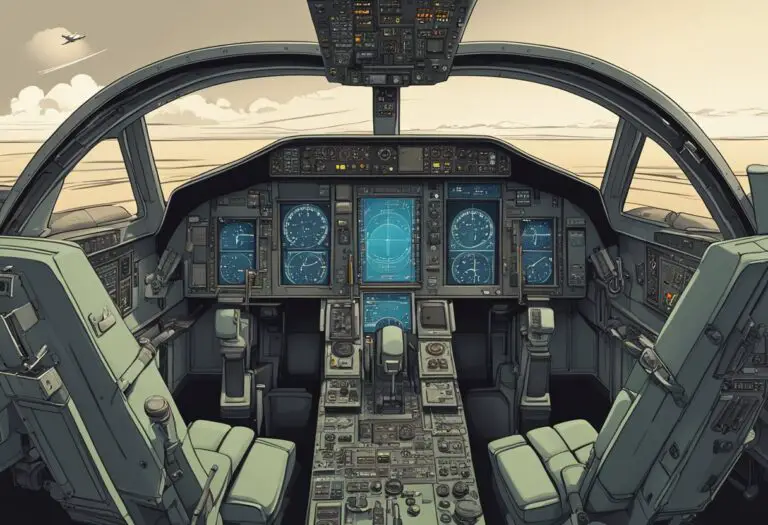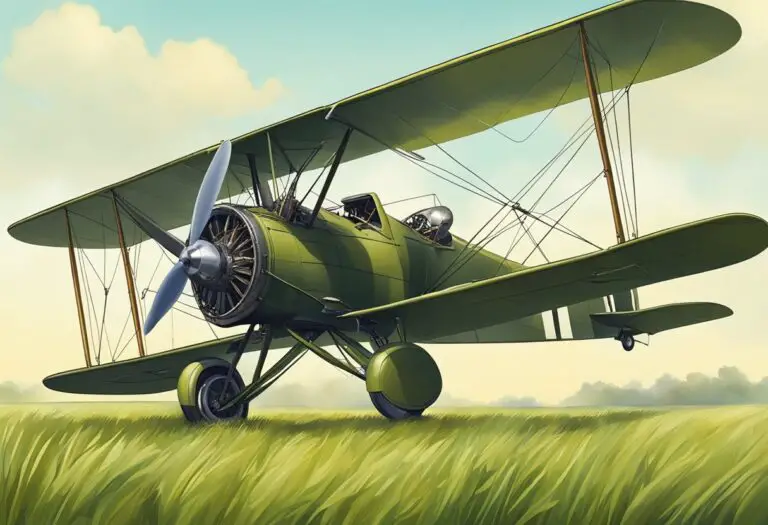How Military Aircraft are Designed? A Comprehensive Overview
Military aircraft are complex machines designed to perform a variety of tasks, from reconnaissance and surveillance to combat and transportation. The process of designing a military aircraft is a highly technical and collaborative effort that involves engineers, designers, pilots, and military officials. The design process typically begins with a set of requirements and specifications provided by the military, which are then used to create a conceptual design.
Once the conceptual design is approved, engineers and designers work together to create a detailed design that includes all of the necessary components and systems. This includes everything from the airframe and engines to the avionics and weapons systems. Throughout the design process, engineers and designers work closely with pilots and military officials to ensure that the aircraft is optimized for its intended use and meets all necessary safety and performance standards.
Historical Evolution of Military Aircraft

Early Flight to World War I
The development of military aircraft began in the early 20th century, with the first successful flight of the Wright Brothers in 1903. During World War I, aircraft were used primarily for reconnaissance and surveillance purposes. The aircraft used during this period were relatively simple and consisted of biplanes with open cockpits. The engines were typically low-powered and unreliable, and the planes were made of wood and fabric.
Advancements During World War II
During World War II, aircraft technology advanced significantly. The use of aluminum alloys, hydraulic systems, and turbocharged engines improved the performance and durability of military aircraft. The development of radar and other electronic systems allowed for more effective targeting and navigation. The use of jet engines also emerged during this period, with the German Messerschmitt Me 262 becoming the first operational jet-powered fighter aircraft.
Jet Age and Cold War Developments
The post-World War II era saw the emergence of the Jet Age and the Cold War. Military aircraft design focused on speed and altitude capabilities, with supersonic flight becoming a reality. The development of guided missiles and nuclear weapons also led to the creation of specialized aircraft, such as the B-52 bomber and the SR-71 Blackbird spy plane. The use of aerial refueling allowed for extended flight times and increased range.
Modern Stealth and Unmanned Technology
In recent decades, military aircraft design has shifted towards stealth and unmanned technology. Stealth aircraft, such as the F-22 Raptor and the B-2 Spirit bomber, use advanced materials and design to reduce their radar signature and avoid detection. Unmanned aerial vehicles (UAVs), or drones, have become increasingly prevalent in military operations, providing surveillance and strike capabilities without risking human pilots. The development of artificial intelligence and autonomous flight systems is expected to further revolutionize military aircraft design in the future.
Design Fundamentals

Military aircraft design is a complex process that involves a broad range of considerations. Design fundamentals are the key principles that guide the design process, and they include aerodynamics, materials and structures, and propulsion systems.
Aerodynamics
Aerodynamics is one of the most important design fundamentals in military aircraft design. The principles of aerodynamics dictate how an aircraft will fly, and they are essential to ensuring that an aircraft is stable, maneuverable, and efficient. To achieve the desired aerodynamic performance, designers must carefully consider factors such as the shape of the aircraft, the placement of control surfaces, and the design of the wing and tail.
Materials and Structures
The materials and structures used in military aircraft design are another critical design fundamental. The materials used in aircraft construction must be strong, lightweight, and durable, and they must be able to withstand the stresses and strains of flight. The structure of an aircraft must be designed to provide the necessary strength and rigidity while minimizing weight and drag. To achieve these goals, designers use a variety of materials, including aluminum, titanium, composites, and advanced alloys.
Propulsion Systems
Propulsion systems are the final design fundamental in military aircraft design. The propulsion system is responsible for providing the power necessary to move the aircraft through the air. The design of the propulsion system must take into account factors such as the size and weight of the aircraft, the desired speed and range, and the operating environment. To achieve the necessary performance, designers use a variety of propulsion systems, including turbojet, turbofan, and turboprop engines.
In conclusion, the design fundamentals of military aircraft design are essential to ensuring that an aircraft is safe, reliable, and effective. By carefully considering aerodynamics, materials and structures, and propulsion systems, designers can create aircraft that meet the demanding requirements of military operations.
Mission-Specific Requirements

Designing military aircraft is a complex process that requires careful consideration of various mission-specific requirements. These requirements differ depending on the type of aircraft and the intended use. The following subsections highlight some of the key mission-specific requirements for different types of military aircraft.
Fighter Jets
Fighter jets are designed for air-to-air combat and require high speed, maneuverability, and advanced weapon systems. These aircraft are typically designed to operate in hostile environments and must be capable of performing a range of missions including air superiority, ground attack, and reconnaissance. Fighter jets are also required to have advanced avionics and communication systems to ensure effective communication and coordination with ground forces.
Bombers
Bombers are designed to deliver bombs and other munitions to ground targets. These aircraft require long-range capabilities and must be able to operate at high altitudes and speeds. Bombers are also required to have advanced defensive systems to protect against enemy fire and must be capable of carrying a range of weapons including nuclear bombs.
Transport and Refueling Aircraft
Transport and refueling aircraft are designed to support military operations by transporting troops, equipment, and supplies, as well as refueling other aircraft in-flight. These aircraft require long-range capabilities and must be able to operate in a range of environments. Transport and refueling aircraft are also required to have advanced communication and navigation systems to ensure effective coordination with ground forces.
Surveillance and Reconnaissance
Surveillance and reconnaissance aircraft are designed to gather intelligence and provide situational awareness to ground forces. These aircraft require advanced sensor systems and must be able to operate at high altitudes and speeds. Surveillance and reconnaissance aircraft are also required to have advanced communication and data processing systems to ensure effective dissemination of information to ground forces.
In conclusion, designing military aircraft requires careful consideration of various mission-specific requirements. By understanding these requirements, aircraft designers can develop aircraft that meet the needs of military forces and provide critical support for a range of missions.
Avionics and Systems Integration

Military aircraft are designed with complex avionics and systems integration that enable pilots to operate the aircraft with precision and accuracy. The avionics and systems integration on military aircraft are designed to improve situational awareness, communication, navigation, and weapons systems.
Cockpit Technologies
Cockpit technologies are designed to provide pilots with the necessary information to operate the aircraft effectively. These technologies include displays, controls, and sensors that monitor the aircraft’s performance and provide critical information to the pilot. Some of the cockpit technologies include:
- Heads-up displays (HUDs) that project information onto the windshield, allowing pilots to keep their eyes on the horizon.
- Multi-function displays (MFDs) that provide pilots with a variety of information, including maps, weather, and aircraft systems.
- Flight management systems (FMS) that automate many of the aircraft’s functions, including navigation and fuel management.
Communication and Navigation Systems
Military aircraft require advanced communication and navigation systems to operate effectively. These systems enable pilots to communicate with ground crews, other aircraft, and air traffic control. They also provide pilots with accurate navigation information to ensure they reach their destination safely. Some of the communication and navigation systems include:
- Radio communication systems that enable pilots to communicate with ground crews and other aircraft.
- Satellite communication systems that provide pilots with global communication capabilities.
- Global Positioning System (GPS) that provides pilots with accurate navigation information.
Weapons Systems and Armaments
Military aircraft are designed with advanced weapons systems and armaments to provide pilots with the necessary firepower to complete their mission. These systems include guns, missiles, and bombs that are integrated into the aircraft’s design. Some of the weapons systems and armaments include:
- Air-to-air missiles that are designed to engage other aircraft.
- Air-to-ground missiles that are designed to engage ground targets.
- Guns that are designed to engage both air and ground targets.
Overall, the avionics and systems integration on military aircraft are designed to improve the aircraft’s performance, provide pilots with critical information, and enable them to complete their mission with precision and accuracy.
Prototyping and Testing

Military aircraft design involves extensive prototyping and testing to ensure that the aircraft meets the required performance and safety standards. The prototyping and testing phase typically involves wind tunnel testing, flight testing protocols, and simulation and modeling.
Wind Tunnel Testing
Wind tunnel testing is an important step in the development of military aircraft. In this process, a scale model of the aircraft is placed in a wind tunnel and subjected to various wind speeds and angles. The data obtained from wind tunnel testing helps designers to refine the aircraft’s aerodynamic design, including the shape of the wings, fuselage, and other components.
Flight Testing Protocols
Flight testing is another crucial step in the development of military aircraft. During flight testing, the aircraft is flown under various conditions to test its performance and capabilities. Flight testing protocols include testing the aircraft’s speed, maneuverability, stability, and other factors. Flight testing also helps to identify any potential safety issues that need to be addressed before the aircraft can be cleared for use.
Simulation and Modeling
Simulation and modeling are increasingly important in the prototyping and testing phase of military aircraft design. In this process, computer models are used to simulate the aircraft’s performance under various conditions. Simulation and modeling can help to identify potential issues before physical testing begins, reducing the time and cost of the development process. Additionally, simulation and modeling can be used to test the aircraft’s performance in extreme conditions that would be difficult or dangerous to test in real life.
Overall, the prototyping and testing phase is a critical step in the development of military aircraft. Through wind tunnel testing, flight testing protocols, and simulation and modeling, designers can refine the aircraft’s design and ensure that it meets the required performance and safety standards.
Maintenance, Upgrades, and Lifecycle Management

Scheduled Maintenance and Overhaul
Military aircraft are subjected to rigorous maintenance schedules to ensure their optimal performance. This includes regular inspections, repairs, and replacements of parts as necessary. The maintenance schedule is designed to prevent issues before they occur, ensuring the aircraft is always in top condition.
Overhauls are also a critical part of the maintenance schedule. Overhauls involve a complete disassembly of the aircraft, inspection of all components, repairs or replacements of worn or damaged parts, and reassembly. Overhauls are typically scheduled at specific intervals, such as every 5 or 10 years, depending on the aircraft type and usage.
Mid-Life Upgrades
As technology advances, military aircraft must also be upgraded to keep up with changing threats and capabilities. Mid-life upgrades involve the replacement or modification of certain components or systems to improve the aircraft’s performance or capabilities. This can include upgrades to avionics, weapons systems, engines, or other critical components.
Mid-life upgrades are often done in stages, with each stage providing incremental improvements to the aircraft. This allows for more cost-effective upgrades and minimizes downtime for the aircraft.
End-of-Life Decommissioning
When military aircraft reach the end of their useful life, they must be decommissioned and retired from service. This involves a thorough inspection of the aircraft to determine its condition and any remaining value.
Some aircraft may be sold to other countries or private companies for use in civilian operations, while others may be scrapped or used for spare parts. The decommissioning process must be carefully managed to ensure all sensitive or classified equipment is properly removed and disposed of.
Overall, maintenance, upgrades, and lifecycle management are critical components of designing and operating military aircraft. By carefully managing the aircraft’s lifecycle, military forces can ensure their aircraft remain effective and reliable throughout their service life.

